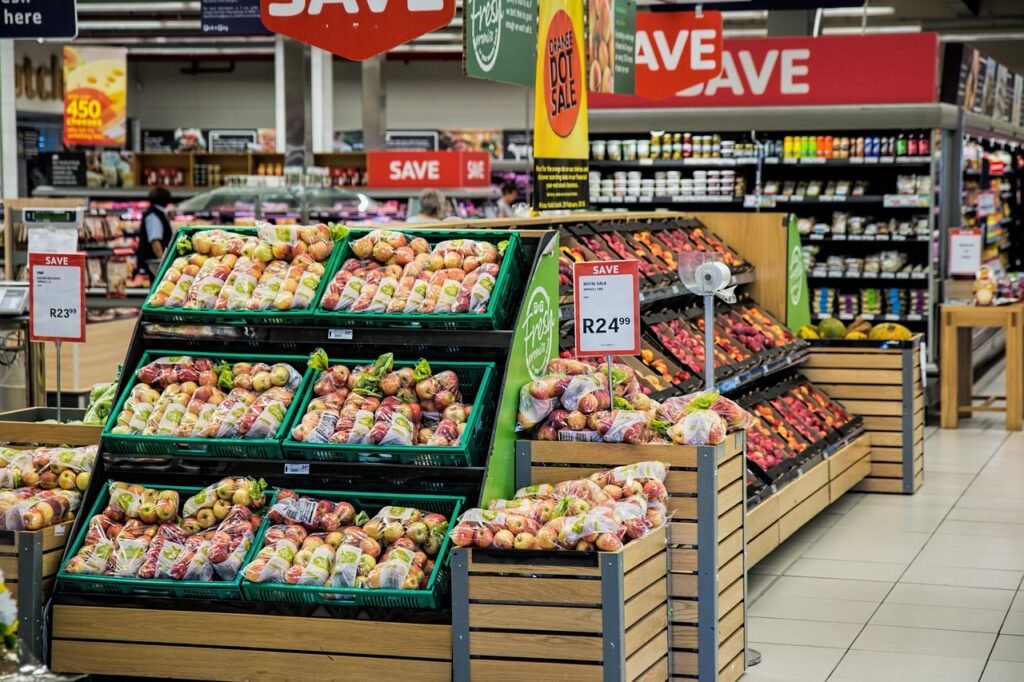Introduction
Radha Krishna Damani’s retail business company, D-Mart (Avenue Supermarts), was considered the gold standard during the period from 2017 to 2021. But now, in 2025, this Indian retail business is facing growing challenges.

The company has built a loyal customer base across India due to its deep discount business model and efficient operations.
However, the circumstances have shifted very fast within 5-6 years. The macroeconomic issues and shifting of business strategy, such as rising inflation, changing consumer preferences, intense competition, and underwhelming digital performance, are now testing the retail giant’s resilience.
Although the cracks are beginning to show, from margin pressure to digital disruption, the issues are mounting over this retail business company; still, D-Mart remains a dominant player in the offline grocery business.
In this article, we will provide an overview of the key challenges facing D-mart in 2025 and how these challenges affect investors, customers, and the Indian retail sector as a whole will be explored.
Slowing Revenue Growth
The key concern surrounding D-Mart in 2025 is its apparent slowdown in revenue growth.
However, the company continues to expand its physical store network. But the sales growth in same-store sales has been underwhelming, which is a valuable indicator for the company’s future development.
The slowdown in sales is due to the contribution of several factors:
The growing inflation and economic uncertainty forced consumers’ spending to shift towards prioritizing essentials over discretionary items, affecting D-Mart’s overall basket value.
In many urban areas, consumers are choosing online shopping platforms for convenience instead of offline D-Mart stores. Hence, footfalls have plateaued.
D-Mart is also facing competition from digital-first players and local kirana stores. Nowadays, both are offering digital payment and quick delivery options, which are eating into D-Mart’s market share.
In addition to this, due to lower purchasing power and market saturation in smaller towns, the expansion into smaller towns is not yielding the same high growth rates seen in the past.
By considering the above conditions, slowdown is a warning sign that D-Mart’s traditional growth levers may no longer be sufficient, particularly as it is becoming critical in digital and product diversification.
Margin Pressure from Rising Operating Costs
The retail business company D-Mart has been admired for its razor-thin cost structure and ability to offer everyday low prices while maintaining healthy margins for a long time.
However, in 2025, this scenario has changed abruptly. The business strategy of this retail business is under significant pressure due to rising operating expenses across the board.
Here, there are some major factors:
The elevated fuel prices have increased the logistics and transportation costs, which have finally disrupted the supply chain.
The wage bills have also increased in urban areas after the pandemic.
The expansion into new geographical areas has required more expenditure to manage both warehousing and inventory.
To keep its “low-price” promise, D-Mart is absorbing cost hikes rather than passing them on to consumers, which ultimately compresses its gross margins.
Unless the retail business company will not find new efficiencies or rebalances its cost structure, margin pressure could persist soon the financial years.
Weak Digital Presence – Dmart Ready Is Still Lagging
D-Mart’s online platform “Dmart Ready” continues to underperform and remains limited in both reach and functionality in 2025, whereas the digitizing retail business environment rapidly evolves. This is one of the major rising concerns about the company’s digital adaptability.
At the same time, the company’s other competitors, such as Reliance’s JioMart, Amazon Fresh, and BigBasket, have made significant inroads with aggressive delivery models, app-based shopping, and wide product assortments.
Some of the key issues include:
Limited coverage across cities,
Poor user interface and app experience,
Restricted product categories and stock-outs,
Lack of express or same-day delivery.
This giant retail business company still lacks on technology-first mindset and logistics scale, and if D-Mart does not solve the rising problems quickly, then it will lose the urban digital-savvy consumer base to more agile, tech-driven rivals.
Conclusion
The retail business D-Mart’s challenges in 2025 are not about survival. It’s about sustaining leadership in a rapidly evolving retail landscape. Although the company is under pressure, starting from digital disruption to macroeconomic headwinds but its cost discipline and brand equity still provide a strong foundation.
It is curious to observe whether D-Mart can pivot and grow, or will continuously lose its customers in a competitive retail sector.
We are discussing similar types of articles related to businesses, stocks, global economy related in our website. Please visit our website for more. The link is given below.
Recently, we have published about an EMS company, which has shown a strong Q1 in FY26. For details, click on the link given below.
https://investmentgrip.com/electronic-manufacturing-services-ems-company/
Pingback: Stock Market Volatility: Key Lessons for 2025 Investors